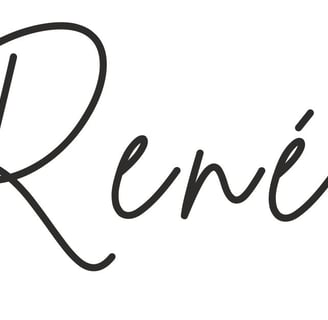The Life-Changing Magic of "I am" Statements


They are just two little words: I am. . .
However, when followed by an intentional choice of how that sentence ends, those two little words can transform your day–and your life. For real.
I was first introduced to this simple tool years ago in my counselor’s office. I don’t recall what I was relaying to her, but after I finished speaking, she said, “I don’t think you realize how these thoughts you have about yourself are sabotaging you.” She continued: “Let’s try reframing this with an 'I am. . .' statement.”
And just like that. . . those two little words changed my life. It’s been many years, and I still use ‘I am’ statements daily – sometimes without even thinking about it. Now, I will catch myself when a critical thought pops up and instantly change it to an ‘I am’ statement.
For example, in response to me thinking, “This is too hard. I can’t do this.” I follow it up with:
“I am a woman who can do hard things.”
“I am a woman who has overcome many things in her life, and I will overcome this too.”
These two simple words can help reshape your reality. They are far more than positive affirmations; they are words used to decisively declare who you are – and who you will be going forward. With each statement, you are slowly shaping who you become.
Your Words Create Your World
Whether you realize it or not, you are daily creating your identity. For example, from the moment you wake up in the morning until you go to bed each night, what are the tapes playing in your head? Possibly. . .
“I’m so tired.”
“I am so not a morning person.”
“I am overwhelmed.”
These statements may seem like simple observations, but when you repeat them in your head over and over, they become a deep-seated belief that you have about yourself.
Your mind is always listening to the script you give it. Then, throughout the day, in the background–without you even realizing it–your brain is constantly scanning the environment for evidence of the truth of that script.
In science, this is called neuroplasticity. It’s when your brain forms new neural pathways based on repeated thoughts and experiences. So, each time you make an “I am” statement–negative or positive–you are carving out these new pathways in your brain. Ones that will either help you or sabotage you.
So, before moving forward, let’s summarize how “I am” statements work:
They focus our brains. Remember, your brain will look for evidence of the information you give it.
They slowly build our identity. The things you consistently say about yourself become deep-seated beliefs.
They change how we act in the world. When you start seeing yourself differently, your actions follow.
Beyond Positive Thinking
This is not about lying to yourself or sweeping your problems under the rug. In addition, this is not about toxic positive thinking, where you repeat mantras that your brain clearly cannot believe. This is about choosing how you will define yourself and the challenges you face.
For example, instead of “I am stressed,” you could say, “I am a person who is resilient.” By reframing it this way, you’re not denying the struggles you’re facing but instead choosing how you will reframe them.
How to Craft “I am” Statements
"I am" statements need a balance. They should feel authentic – just beyond what you currently believe to be true. If they are too far out of reach, your brain will reject them as too grandiose. However, if you keep the bar too low, they won’t motivate your personal growth.
Let me give you some examples:
Instead of "I am a disorganized mess," try "I am a woman who values order and is slowly becoming more organized."
Instead of "I am so impatient," try "I am becoming a woman who is patient."
Statements such as these acknowledge where you are but also leave room for you to grow.
Let’s Get Started
Become aware of your current “I am” statements. For a few days or a week, jot them down in your journal or put them in a notes app on your phone.
Carve out time to reflect on your statements. Which one stands out to you the most? Which one do you say all the time? Which one, if you could turn it around, would have the most impact on you?
Choose 3 to 5 statements you’re currently saying about yourself and then rewrite them.
Begin with the sentence stems of “I am. . .” or “I am a woman who. . .”.
For some of them, choose to follow the “I am” statement with evidence. For example, “I am resilient. I have bounced back from health challenges, raised great kids, and transitioned careers when I got laid off, so I can handle this too.”
These new statements should feel good to you when you say them. They should make you feel hopeful – and maybe even excited.
Practice these new “I am” statements consistently throughout the day until they become habitual.
Here are some examples:
"I am a woman who finds meaning in every season of life."
"I am capable of learning new skills. I’ve done it before, so I can do it again.”
"I am learning to make choices that honor my body and well-being.”
The Mantra App
One resource that I use to do this is the Mantra App. I am not getting paid to say this; I’m sharing it because it’s what I use daily, and it has been such a blessing for me to keep my mindset in check. It is completely customizable from the colors, themes, and background music (or not music at all), to which type of mantras you are shown.
You can choose the categories and the mantras they give you in each category. If you don’t like a particular one, there’s a button you can click not to see that one again.
Or they have a place where you can create your own statements. That’s the way I use it. My brain more readily accepts mantras I have created for myself. Then, I have a reminder set in the app to get 12 of these statements as notifications on my phone throughout the day. You can even set the time frame in which you receive them.
There are other great features on the app that I occasionally use as well, but that is the primary way I make use of it.
Your Turn
A beautiful life is not built on having the perfect circumstances; it’s built on how you see yourself and the world around you – because that drives your actions. And one of the ways that vision is shaped is through the intentional ways you speak to yourself – and about yourself to others.
As with any habit, start small. Begin today by catching yourself when you have one of those negative thoughts you’ve identified in your notes. Then, quickly turn it around and say your new statement.
Over time, you will begin to notice the shift happening within you as you regularly do this. These shifts in language will start to produce some amazing changes within you.
Here’s to our beautiful, intentional lives!

